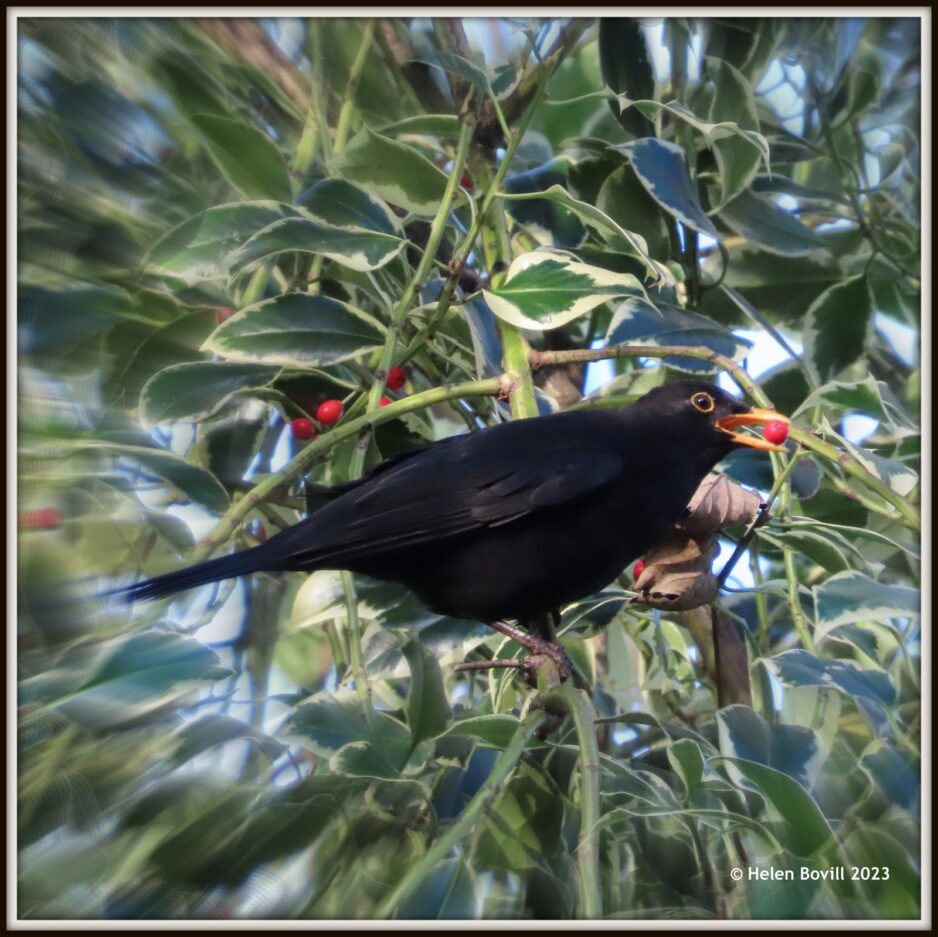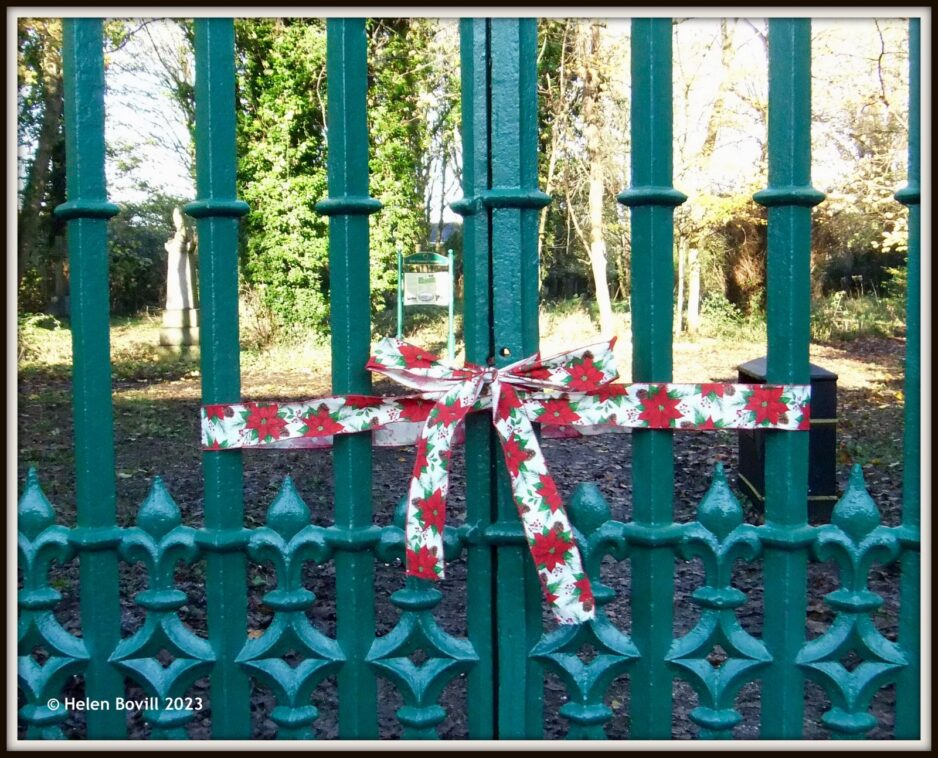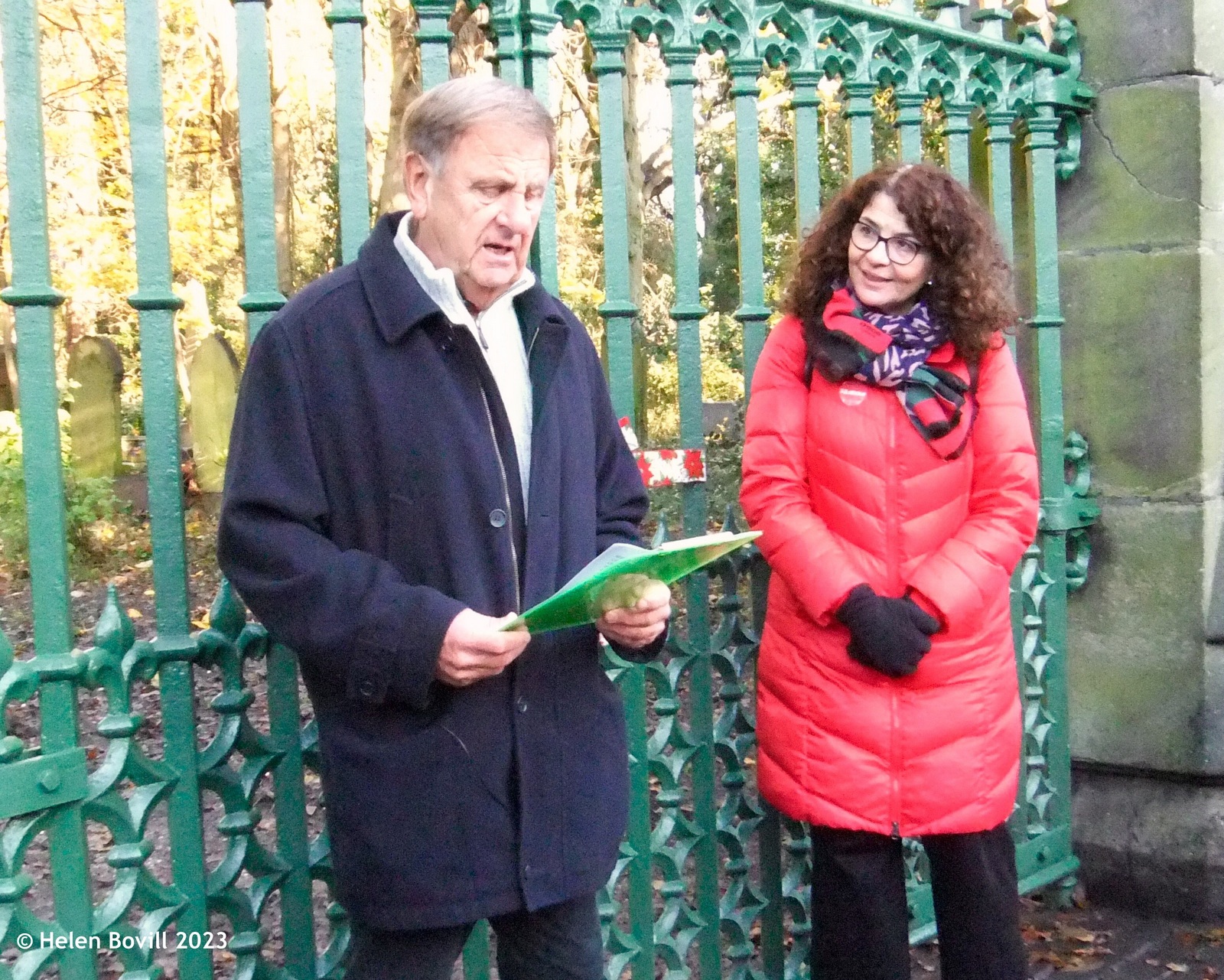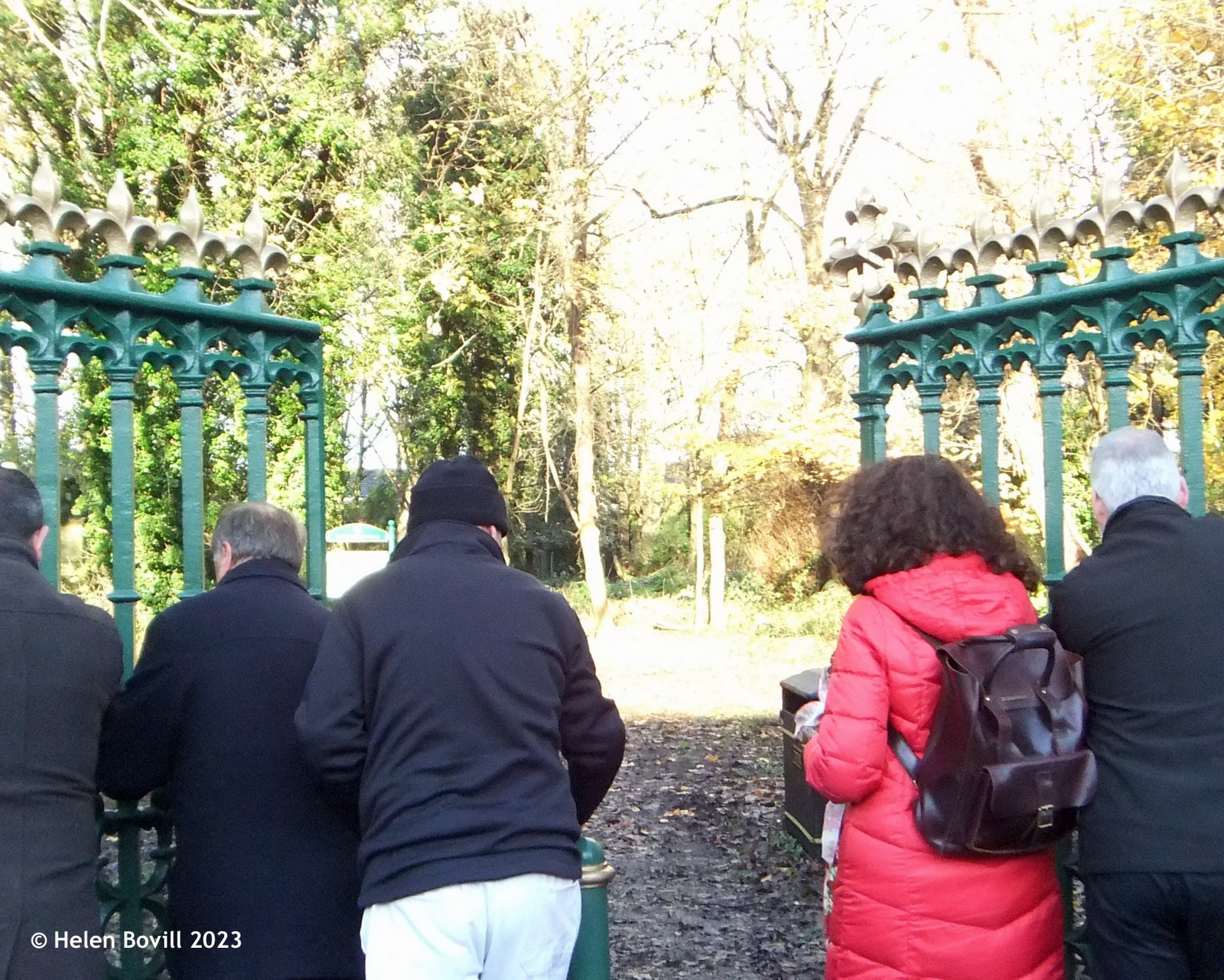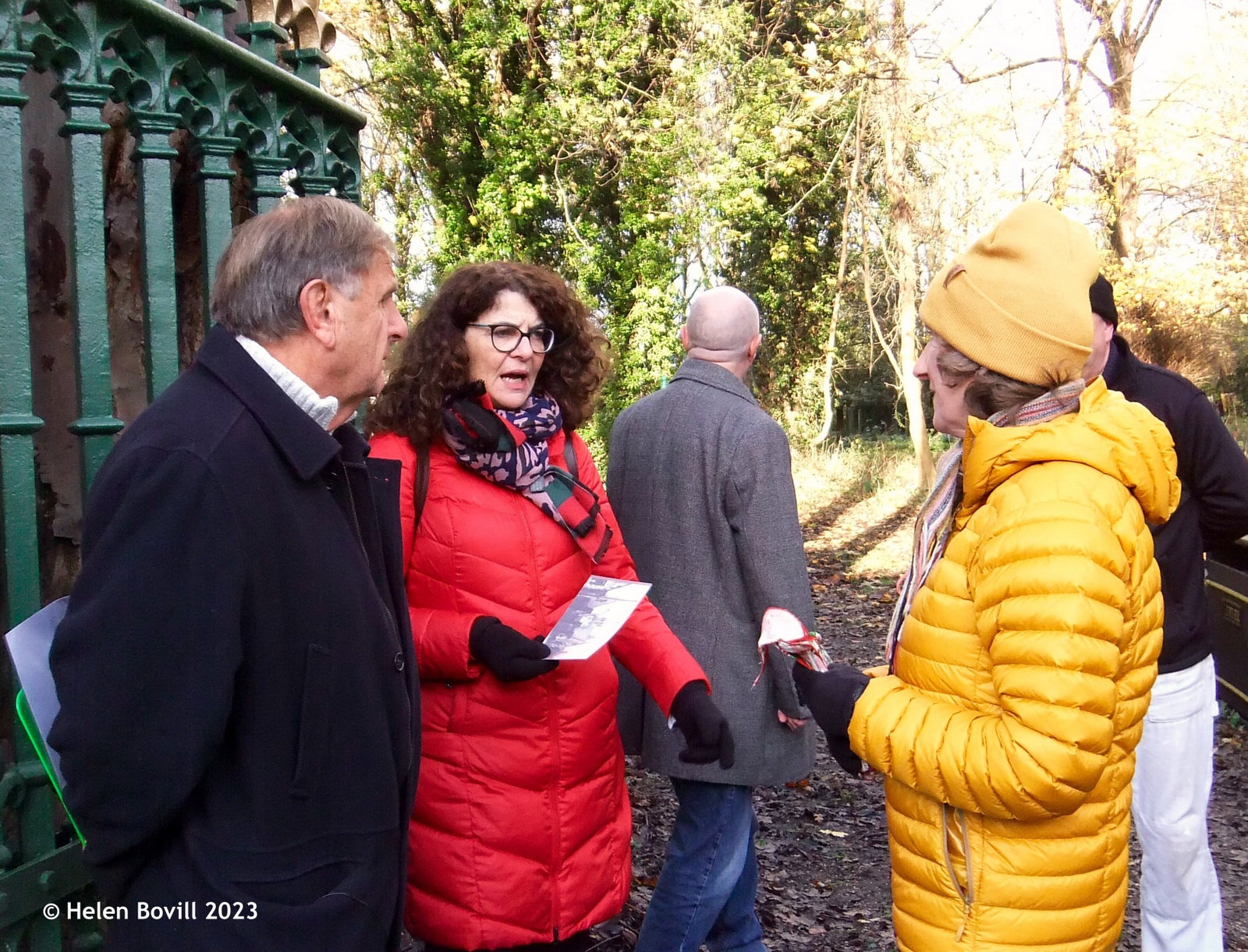The month started off very cold and frosty, and there was even a light dusting of snow one day. The cemetery always looks lovely when covered in snow, but it wasn’t deep enough for the spectacular look that used to be a regular sight every winter. Nevertheless I managed a quick visit before the snow thawed, and found some fox footprints at the eastern end. Proper cemetery wildlife rather than just that of a dog, although the two can look similar!
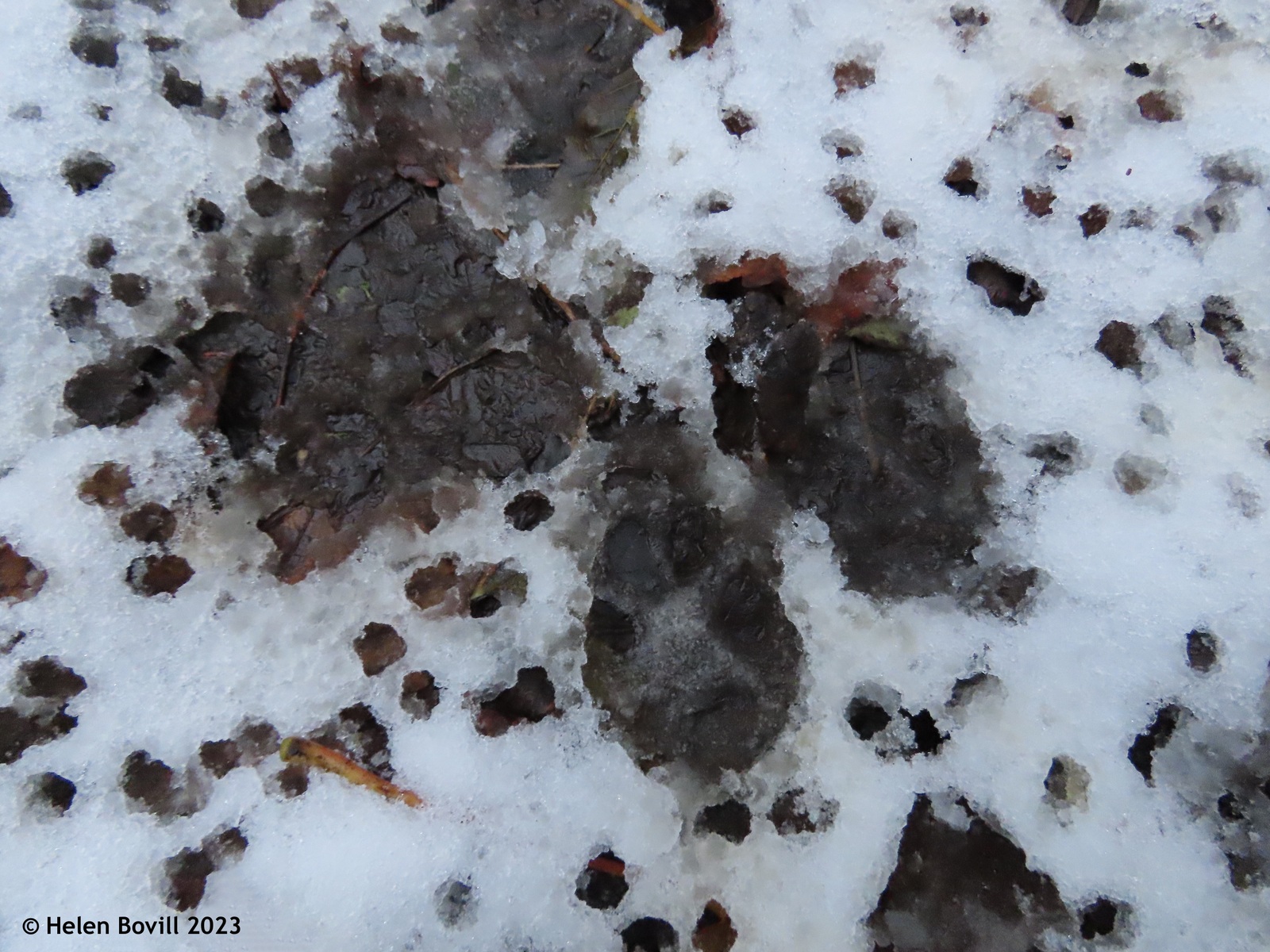
It was also a very wet month, with some heavy rainfall leaving wet puddles everywhere. After one night of particularly heavy rain a hole opened up in the ground near one of the graves, exposing some of its foundations. The month ended with some mild but very windy weather, bringing down plenty of small branches and also a couple of larger ones.
Birds
It’s a lot easier to spot the avian branch of the cemetery wildlife at this time of the year, with many of the trees being bereft of their leaves. I was delighted to see bullfinches on a number of occasions and counted a total of three – two males and one female. I watched one of the males flying down low, grabbing something in his beak and then flying back up to a higher branch. It turned out he was eating wood avens seeds, a small plant that grows all over the cemetery and has tiny yellow flowers in the spring. After a few hours of working in the cemetery or just walking around with my camera, I always end up with some of these seeds attached to my clothes. But they are obviously appreciated by these stunning birds!
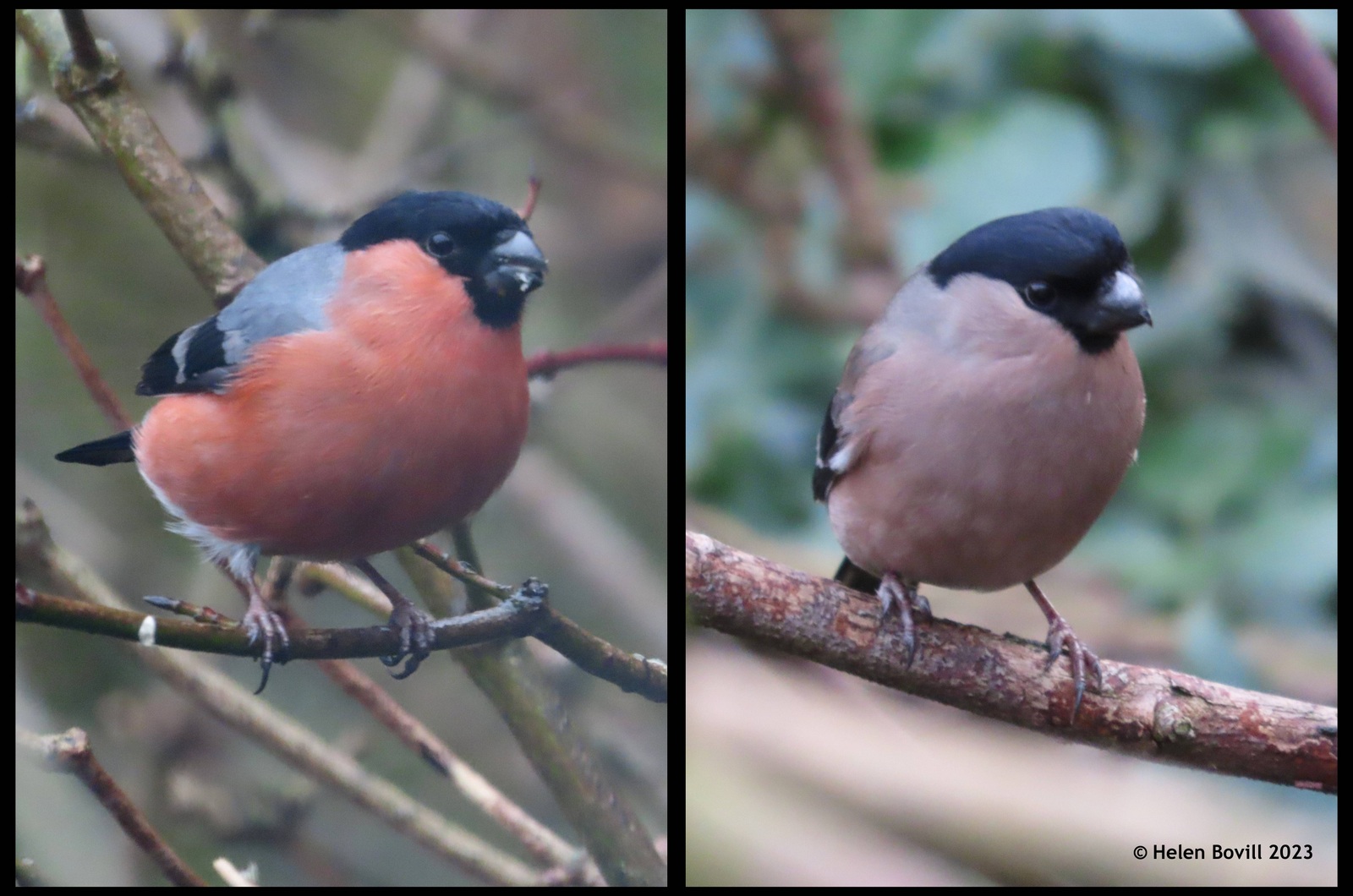
There are three different species in the cemetery that have large areas of feathers in shades of pink/red – bullfinch, chaffinch and robin. But as you can see there are subtle differences to those shades.
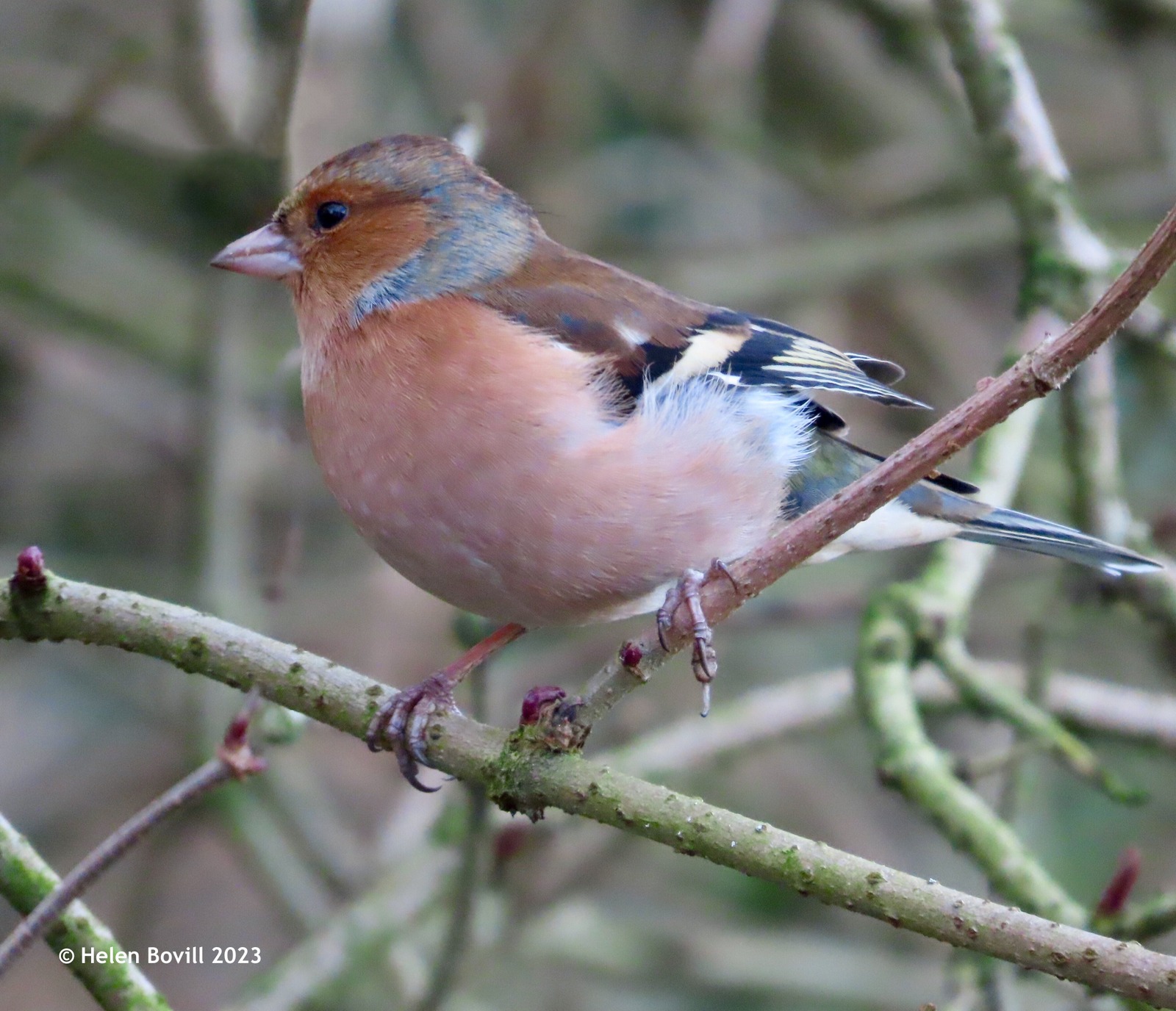
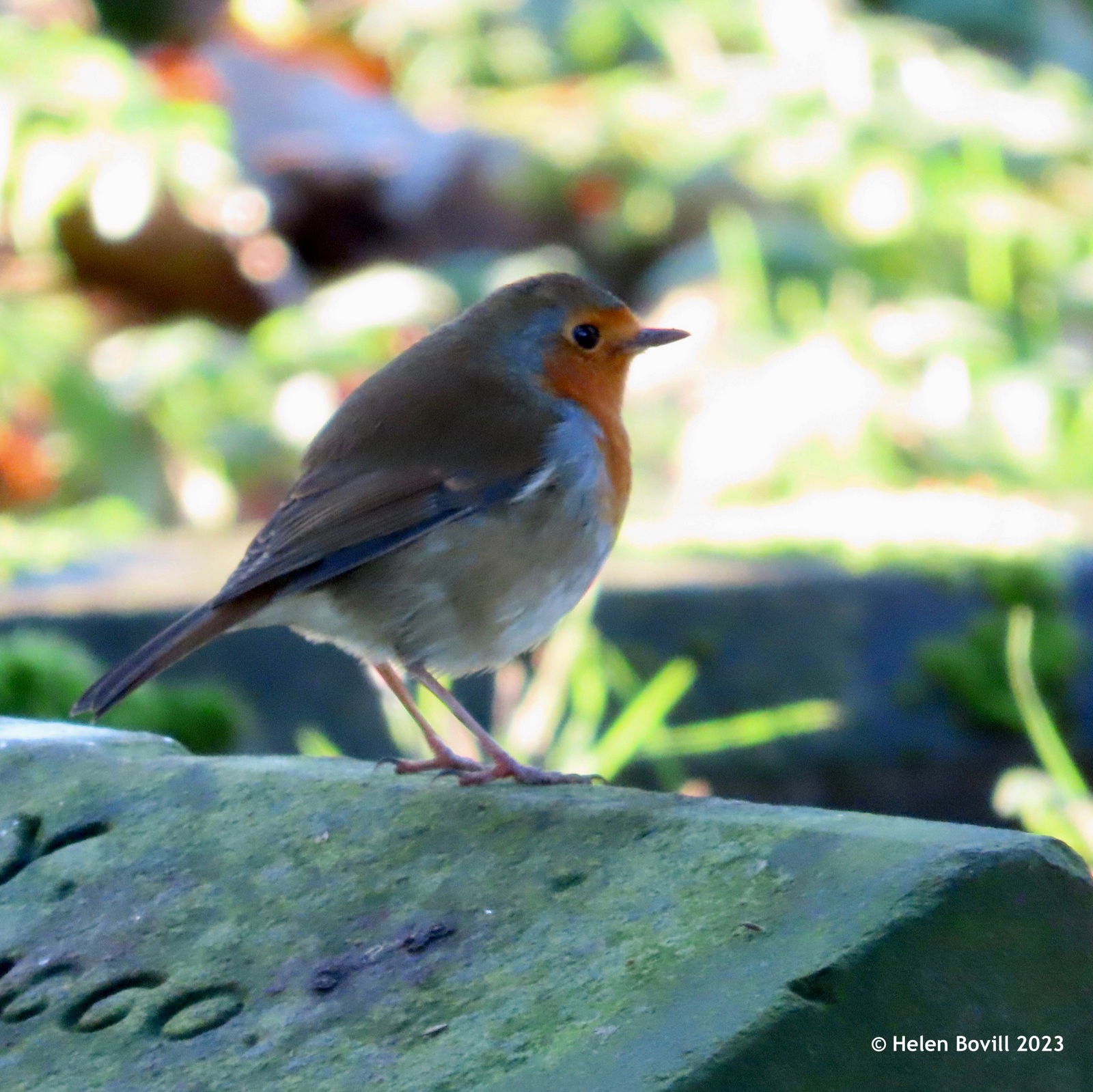
Goldfinches also have red feathers, albeit just a small area around the face, and which is absent in juvenile birds.
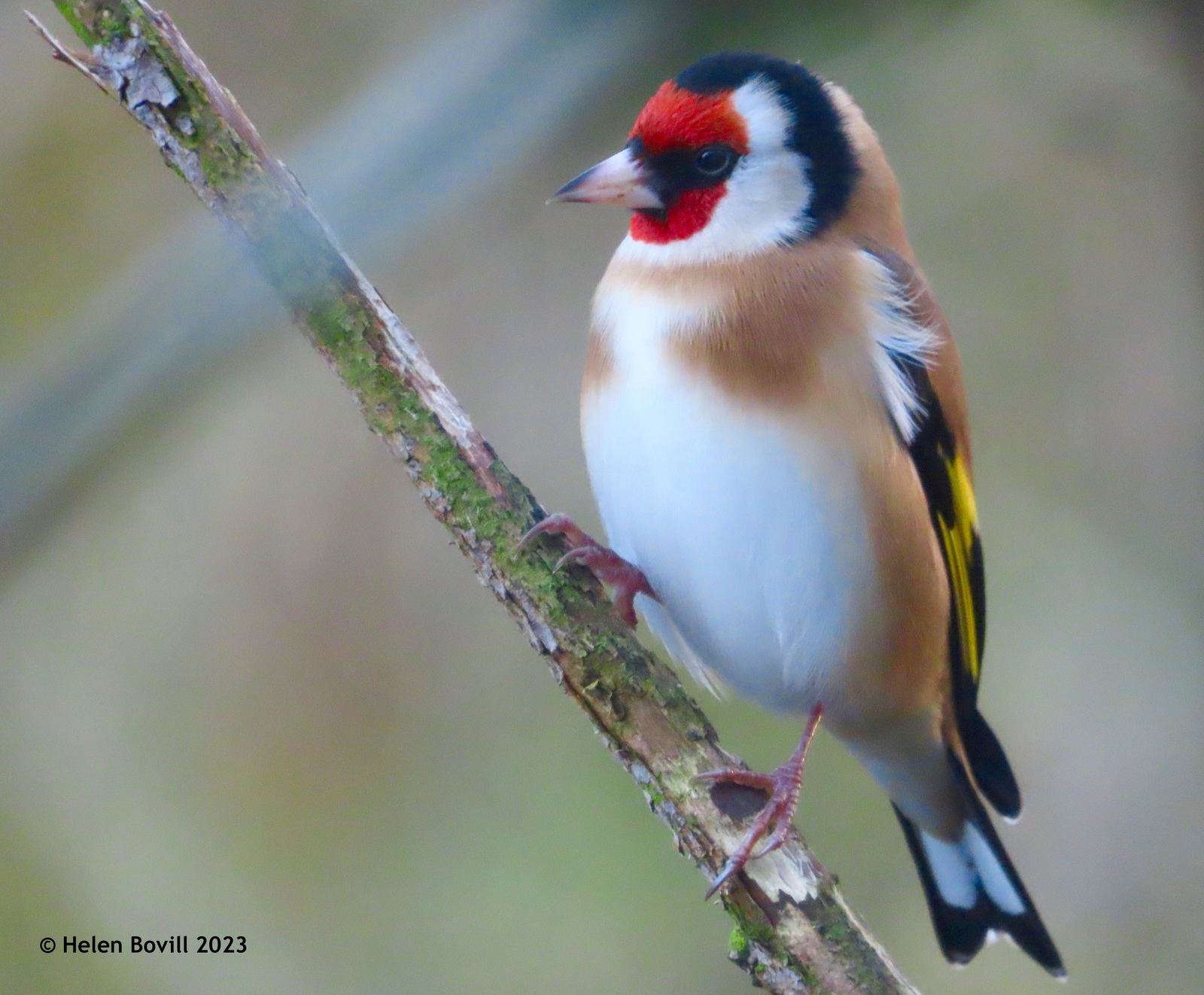
I see these most days now, and counted a small flock of six at one point. The collective name for goldfinches is a charm, and they certainly are charming little birds.
I also saw a slightly larger flock of long-tailed tits, high up in the trees.

Nest box survey
The volunteers did this during the middle of the month – a little later than usual due to the wet weather. It’s a job best done when it isn’t raining. This is the fourth year we’ve been doing these surveys.
We should have a total of 57 boxes in the cemetery but we were only able to locate and check 50 of them. 26 of them showed signs of having been used at some point during the year. This gave us an occupancy rate of 52%. I’ve counted the two owl boxes at the western end of the cemetery as having been used due to them containing nest material, although there was no evidence to suggest they’d been used by owls. They had most probably been used by either wood pigeons or stock doves. And as we were checking one of the boxes, a squirrel shot out of it, followed by another one and then at least two more! None were babies but were probably juveniles born in the summer. I’m sure our activities hadn’t adversely affected them – just look at my last photo!
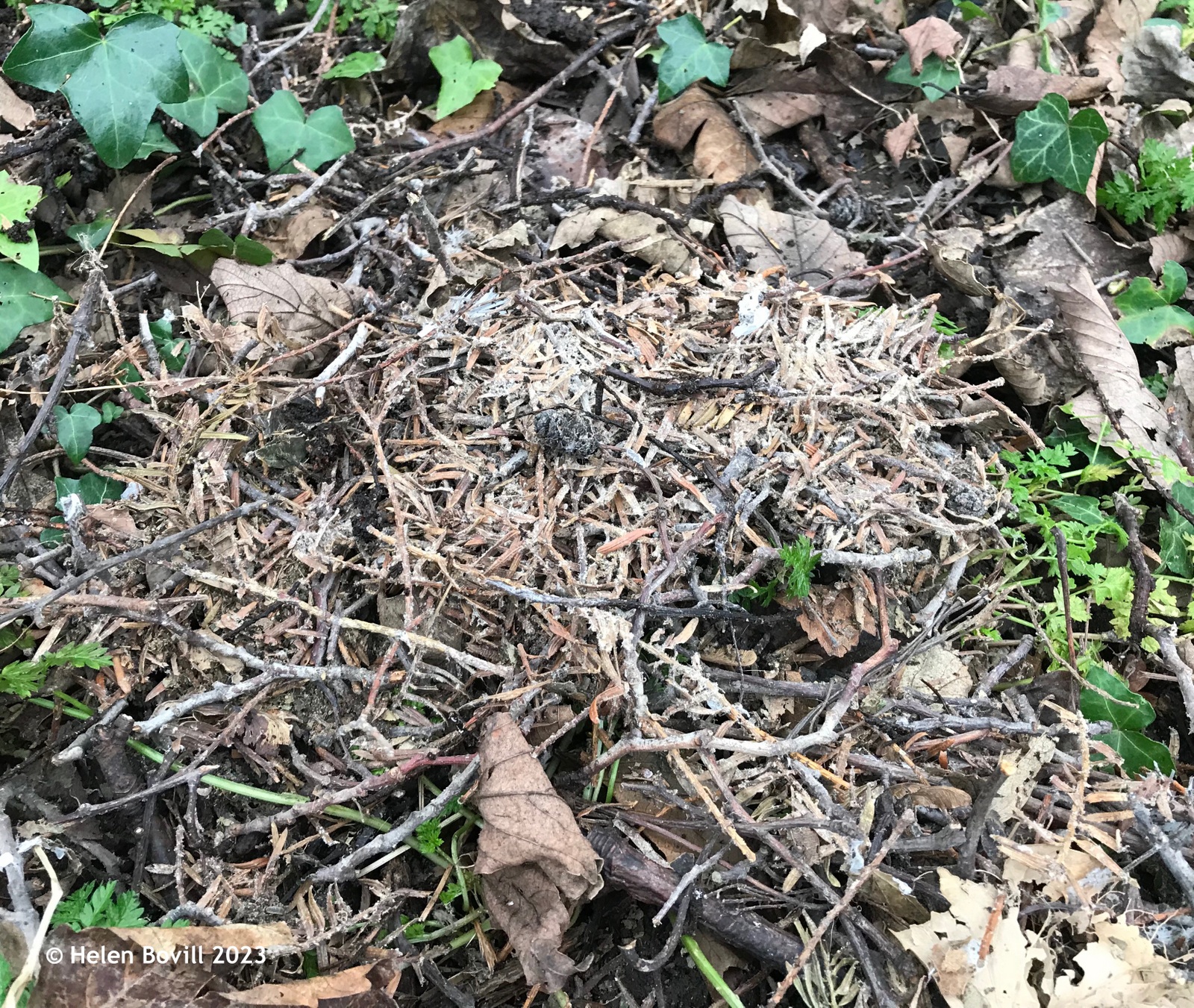
This occupancy rate is lower than the 61% of last year’s survey. I noticed in last year’s survey that several of the original boxes had been used every year but this year 5 of those boxes had not been used for the first time. The majority of our boxes have been in place since 2019 and are now around 5 years old, so it could be that they’re starting to deteriorate and are less attractive to the birds. However, the main species that use the boxes are blue tits and great tits, yet I haven’t noticed a decline in their numbers.
Plants
I don’t have much to report this month as very few of our plants are in flower. The musk mallow, one of the wildflowers we planted in November 2022, and which started flowering in June this year, is still flowering. I had feared it might have been killed by last month’s frost but it survived. It’s a welcome addition to the Spring Bank West grass verge and it will be interesting to see how much longer it continues to produce flowers.
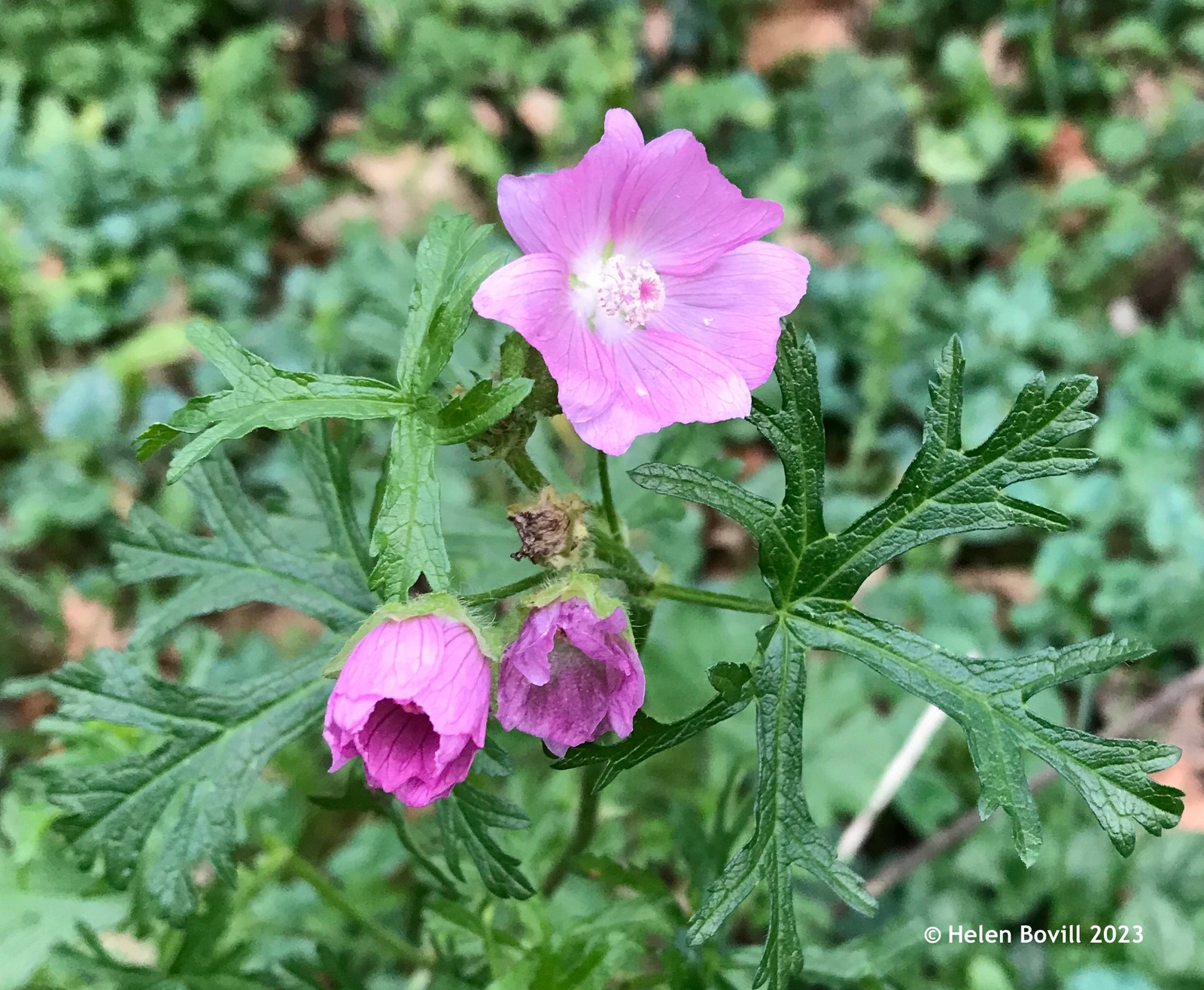
I saw a few dandelions flowering in the grass verge alongside Spring Bank West. At the end of the month I noticed that the lesser celandines had started to grow. I even found a few buds on some of them, and an almost-open flower.
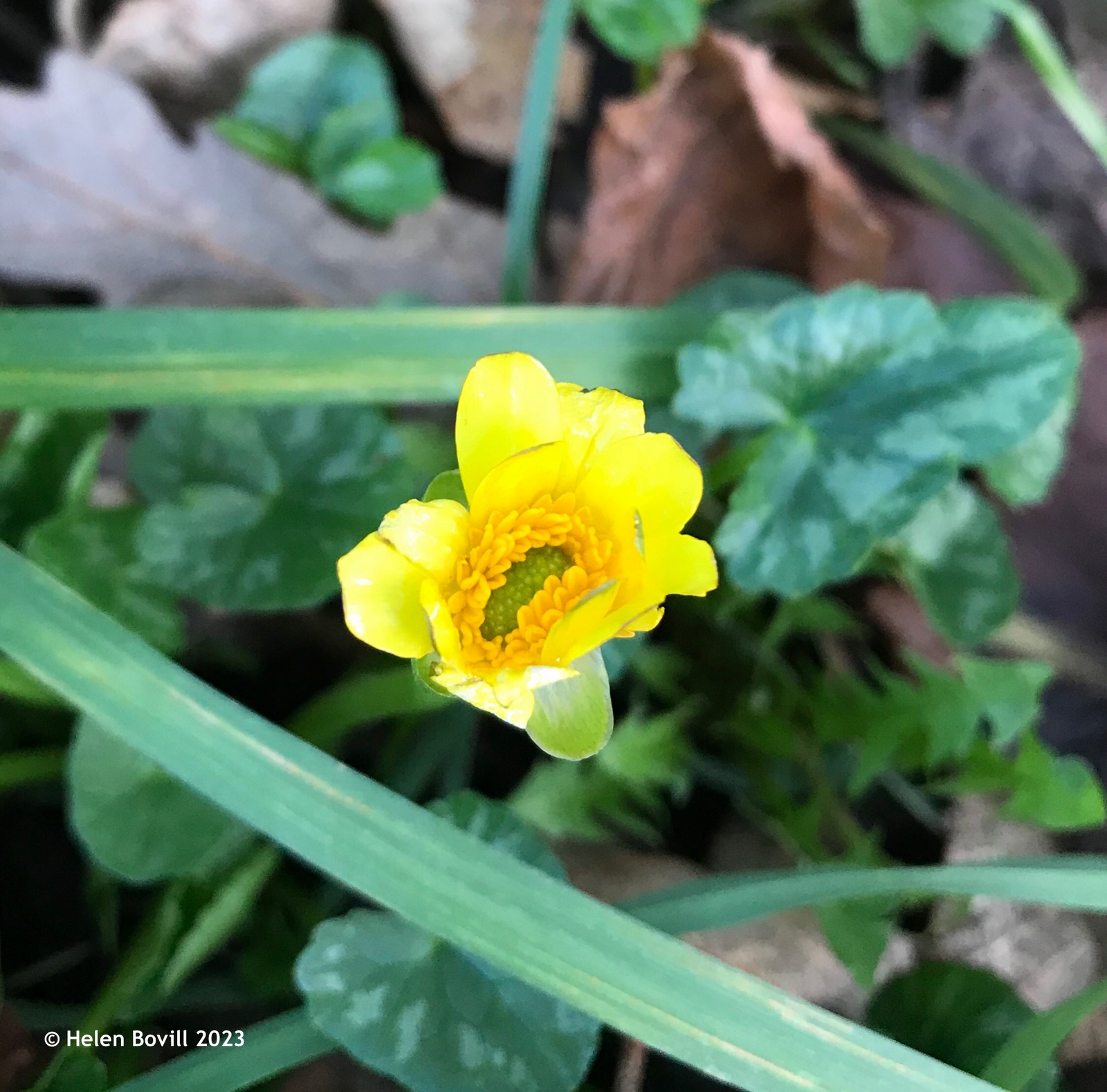
There is a large Forsythia growing at the side of the main entrance, and I found buds on that too.
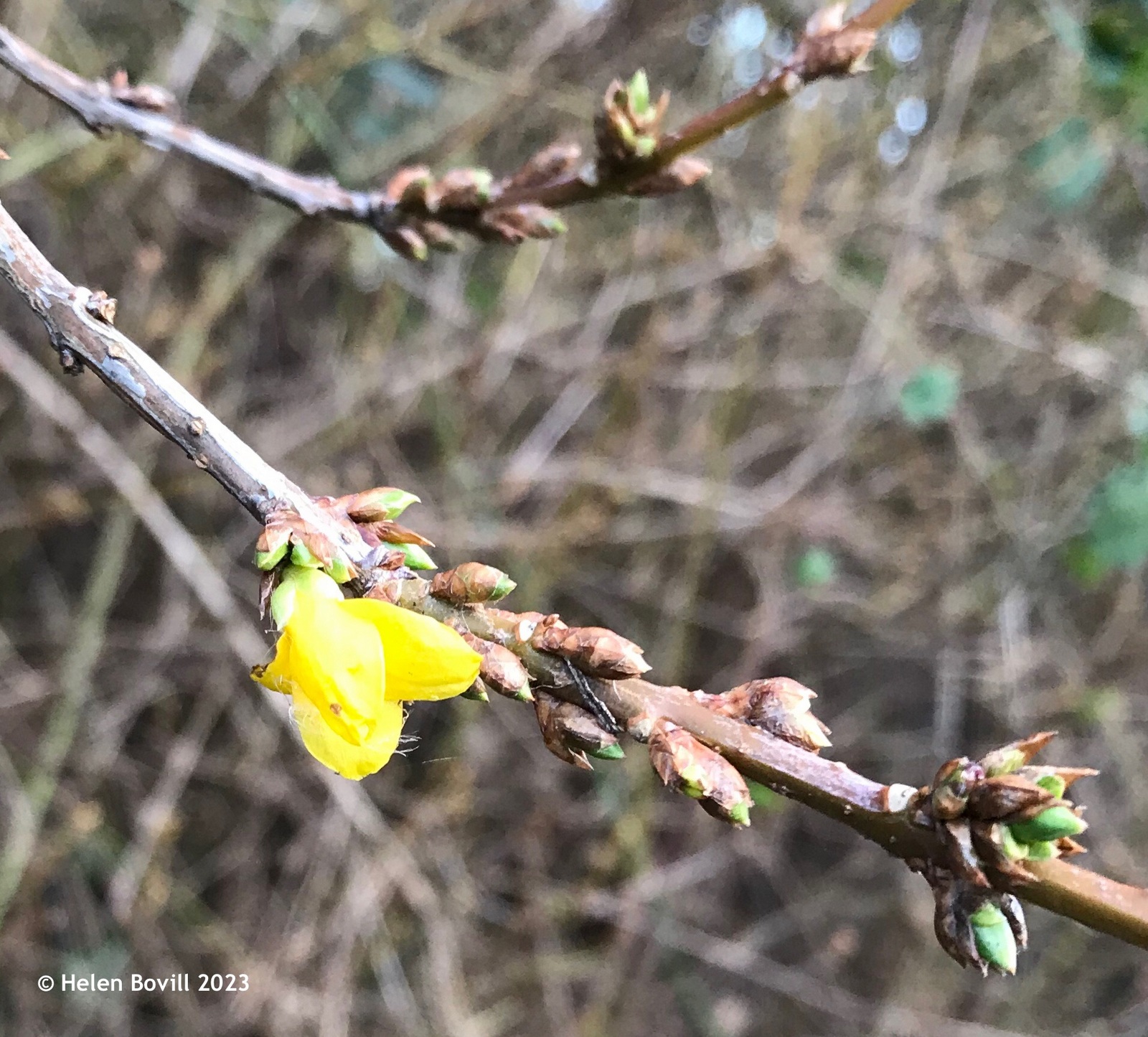
One of the snowdrops the volunteers planted in the Quaker Burial Ground a couple of years ago is now in flower. But last year they had started flowering well before Christmas.
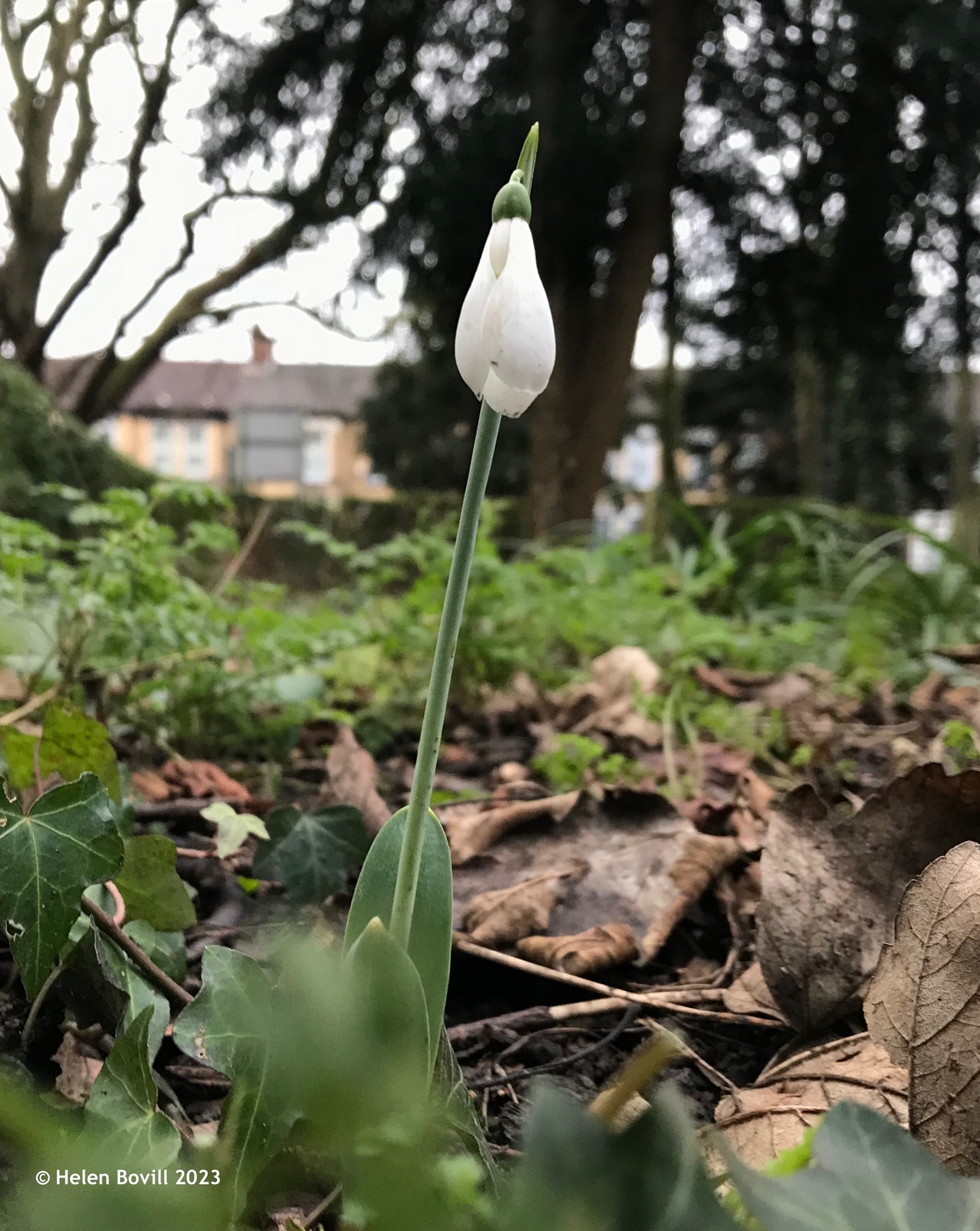
Elsewhere in and around the cemetery there are still plenty of berries for the cemetery wildlife to eat. The lead photo shows a male blackbird eating some of the berries on a variegated holly tree. That tree is in the central part of the cemetery. I took this next photo on a frosty morning at the start of the month.
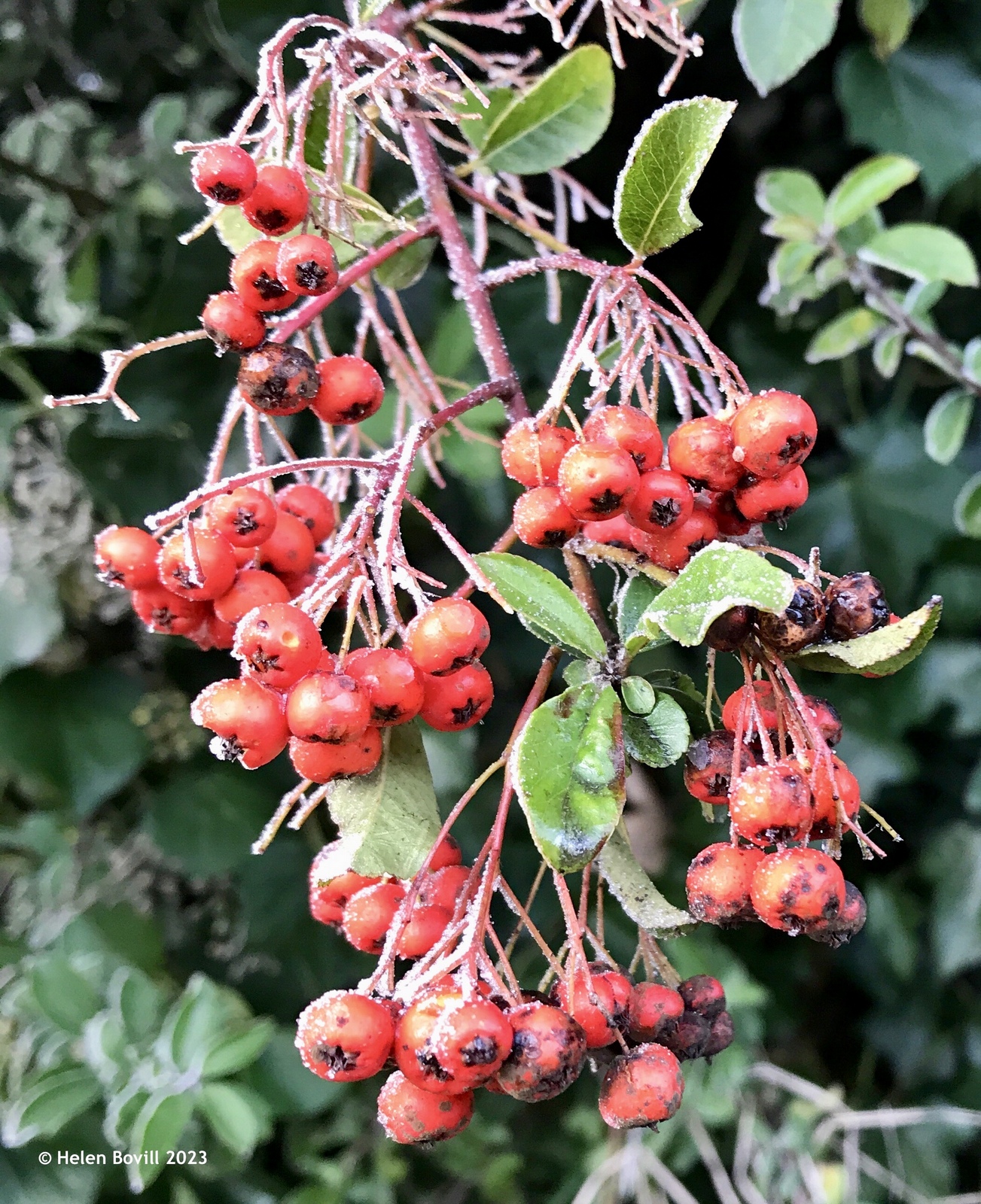
Fungi and Lichen
I found a few types of fungi including some jelly ones, and this large bracket earlier in the month. I checked it a couple of weeks later and it hadn’t been affected by the snow.

I also found a nice example of turkey tail fungus on a tree near the centre of the cemetery. Parts of it showed evidence of having been nibbled by the cemetery wildlife.
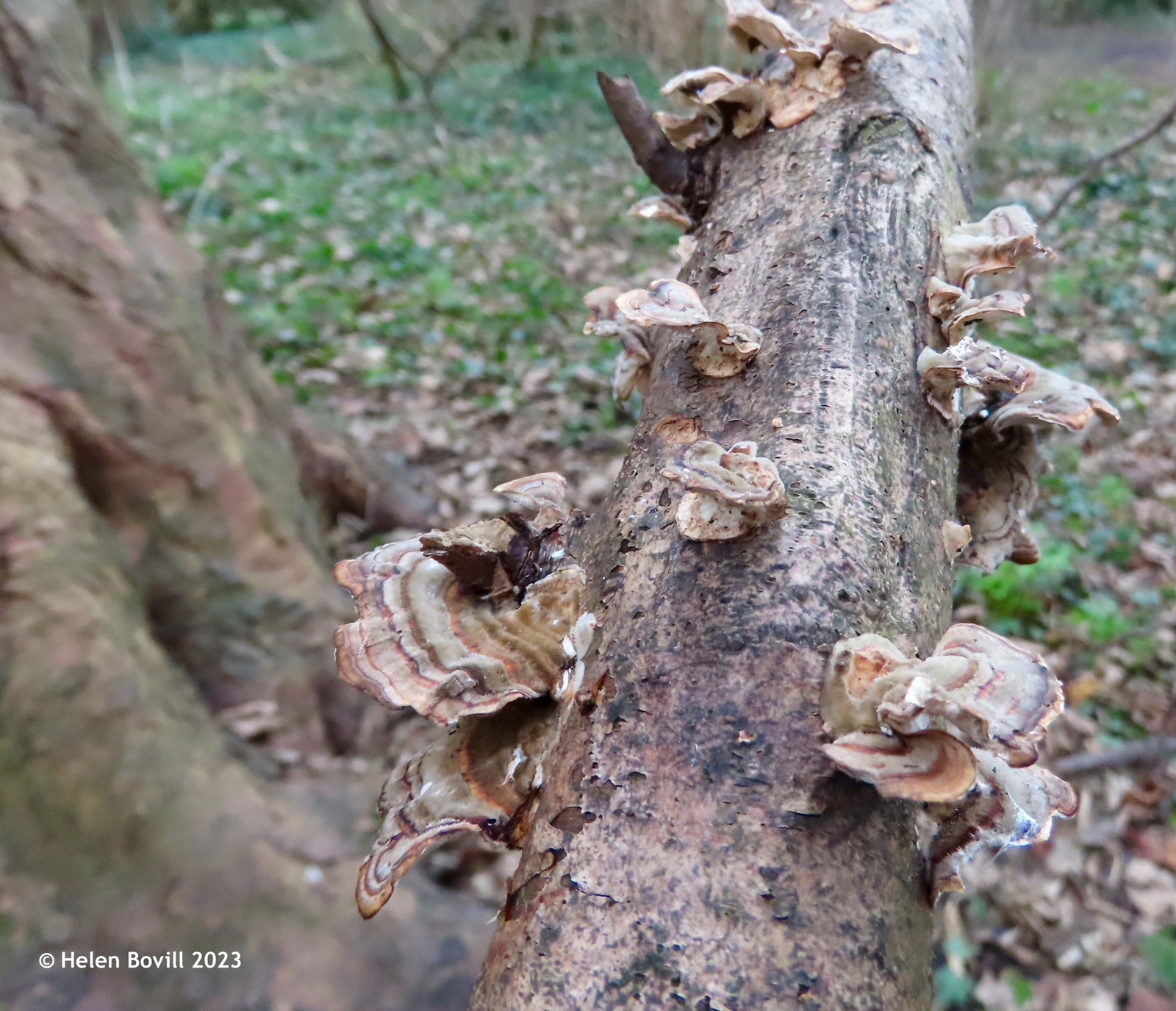
December’s high winds left the ground littered with fallen branches. This gave me the opportunity to examine, close-up, the lichen covering many of those small and medium-sized branches. I don’t think I’ve mentioned lichen before, which is the result of a partnership between fungus and algae. The most common one in the cemetery is this – the common orange or yellow scale lichen. Please see the link at the end of this report for more information on this fascinating organism.
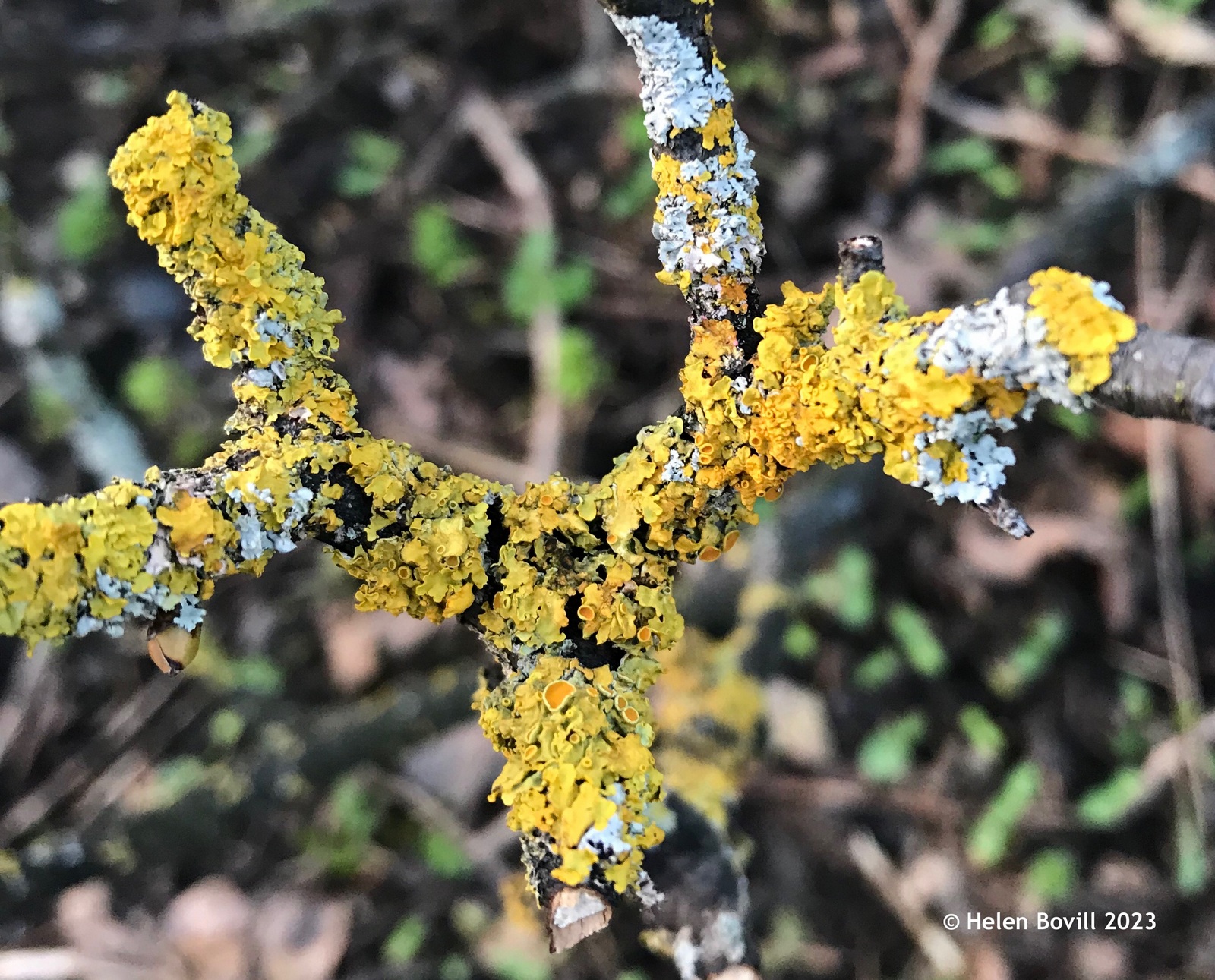
Conclusion
Winter has now arrived, but there are many signs of autumn still present. On one of the milder days I noticed the sunlight catching a cluster of small insects in flight, probably flies of some sort. At the end of the month some of the late winter flowers had already started to appear, and the month ended on a mild rainy note. The ground is still very wet and the footpaths muddy, making the conditions less than ideal for humans. However, the cemetery wildlife has not been affected, and there is plenty of food and water to sustain it as we head into January.
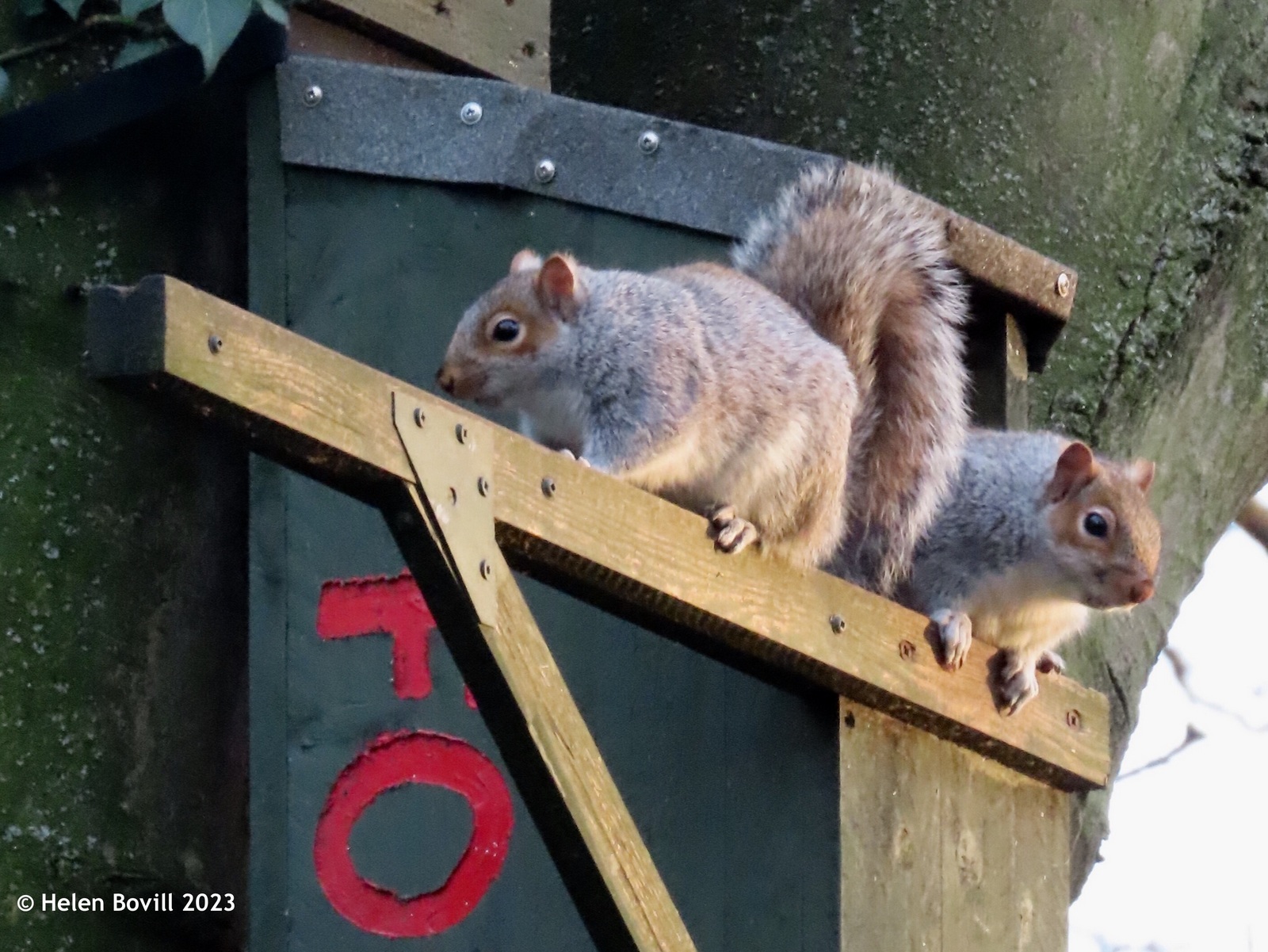
Some more information on lichen –
What is Lichen? 7 Lichens Found on Trees – Woodland Trust


